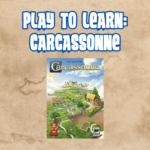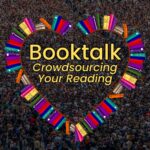Turning Pages: Strategies for Creating a Reading Culture
 Booktalking is an important part of creating a culture of reading in a school and community. Honestly, it does not matter which age group you are talking about. The key is to change it from a passive experience to an active one. While sharing books with students is enjoyable, I find it more effective to create spaces and opportunities for students to discover them organically.
Booktalking is an important part of creating a culture of reading in a school and community. Honestly, it does not matter which age group you are talking about. The key is to change it from a passive experience to an active one. While sharing books with students is enjoyable, I find it more effective to create spaces and opportunities for students to discover them organically.
During my time as a 6-12th grade librarian, a 12th-grade English teacher requested booktalks every five weeks. This was a great opportunity, and I appreciated the teacher’s initiative, especially in my first year at that school.
Making Booktalks Active
I knew that standing and delivering booktalks passively was not going to work all year. I could integrate a few booktalks into each class period, but I needed to make the experience more active. I also wanted the students to move if possible. Over the years, I have discovered many techniques used by fellow librarians. This is the first blog where I will talk about the variations and techniques I have used and discovered. The key components I include are:
- Engagement
- Self-Discovery
- Movement
- Exploration
For each technique, at least two of these components are used. Sometimes I mix and match different booktalk techniques to change it up for students. Some require technology, and some do not.
 Physical Books vs. Digital Books
Physical Books vs. Digital Books
I find that K-12 students prefer physical books by and large. While Sora listeners are growing in K-12, it has not surpassed physical book readers. Students say it is less distracting to read physical books. On their phones and other devices, they receive so many notifications that it interrupts the flow of reading. While I personally love Sora, Libby, and the Kindle Apps that allow me the flexibility to have a lot of books with me, it is not the experience for my students. Some students like the anonymity of eBooks. However, they are on devices from sun up to sun down, and sometimes a physical book gives them a respite from the digital world.
 The Role of Audiobooks
The Role of Audiobooks
Audiobooks are the exception. Breaking the false narrative that they are not real reading has been an uphill battle. I still see memes about it on social media. Audiobooks make books more accessible to so many. They remind me of the curb-cutting effect. While audiobooks were created for those with challenges, they have become the main way many readers consume books. While I like to listen to music, I really prefer audiobooks. There are so many books and so little time.
Upcoming Posts
- Booktalk Centers
- Choose Your Own Booktalk
- Literary Genre Quiz
- Book Trailers
- Booktalk Bingo
- Virtual Booktalks
- Book Resumes
- Book Cafe/Book Dating
- First Chapter/Sentence Fridays
- Booktalk Experiences
- and so many more!!





